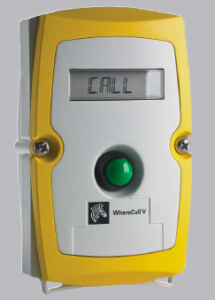 International Data Corporation, a worldwide market-analysis provider, estimates current global waste in manufacturing supply chains at $900 billion. Modern supply chains literally involve countless moving targets, each of which must be hit to achieve optimum efficiency. The complexity of delivering on-time, every-time at minimum cost amid constant change can be staggering, if not seemingly impossible. But the real-time feedback loops of which cutting-edge information technology is capable can get you very, very close!
International Data Corporation, a worldwide market-analysis provider, estimates current global waste in manufacturing supply chains at $900 billion. Modern supply chains literally involve countless moving targets, each of which must be hit to achieve optimum efficiency. The complexity of delivering on-time, every-time at minimum cost amid constant change can be staggering, if not seemingly impossible. But the real-time feedback loops of which cutting-edge information technology is capable can get you very, very close!
Take for example the parts-replenishment process, where high volumes of discrete parts can be moved to production lines with Kanban just-in-time efficiency. But the Kanban solution falls short of delivering the right parts in the right quantities to the right locations at the right times, all while also coordinating with external suppliers for delivery what components are needed when and where.
When properly executed, it can tell you when and where there is a shortage of parts, but it doesn’t help you analyze your overall process. For example, it doesn’t complete the feedback loop by telling you which lines most often run low of which parts.
Enterprise Resource Planning (ERP) systems can help, but the Aberdeen Group recently reported that, overall, enterprises were achieving no more than 28 percent of the potential of their ERP solutions. The causes vary, but most result from a lack of ability in older systems to transfer critical data between functional areas of the enterprises, not to mention outside of those enterprises. Zebra’s Material Flow Wireless Parts Replenishment solution (MFWPR) uses data stored in existing ERP repositories to calculate optimal routing and timing of material to the assembly line. MFWPR delivers the hardware and software needed for fully integrated management of material flow, deploying RFID technology to trigger signals for real-time notice of where and when a certain material is needed.
Zebra’s WhereCall buttons are deployed at critical assembly junctures to transmit a signal relayed to MFWPR. The transmitted data includes the location of the worker who triggered the request, the specific parts needed, the storage location of the requested parts, and the order in which parts should be delivered. In a typical installation, the RFID data is delivered to a hardened display mounted on the forklift operated by the material handler assigned to the order. The material handler sees a parts list that is coded for easy recognition of the order in which the items should be gathered and delivered.
Zebra’s MFWPR solution is covered in depth in its recent white paper, The Path to Peak Supply-Chain Performance.













